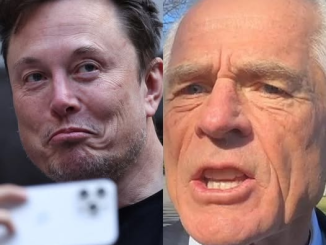
In a jaw-dropping announcement that feels pulled straight from the pages of a science fiction novel, Elon Musk has unveiled his most audacious project to date: a hypersonic spacecraft capable of global travel in just one hour—and interplanetary missions soon after. The tech mogul, known for reimagining transportation, energy, and space travel, has now set his sights on completely reshaping how humanity moves across the planet and beyond.
The Next Giant Leap for Mankind
The spacecraft, dubbed “Starline One,” is a collaborative effort between SpaceX and a secretive team of aerospace engineers who have been working behind closed doors for nearly five years. Utilizing a combination of hypersonic propulsion, orbital-class liftoff, and AI-guided navigation, the ship is capable of reaching speeds exceeding Mach 20 (15,000 mph)—fast enough to fly from New York to Tokyo in under an hour.
But this isn’t just about quick trips around Earth.
“This is our ticket to Mars, to the Moon, to the stars,” Musk said during the unveiling at a private SpaceX event in Boca Chica, Texas. “We’re not just building a transport system. We’re building the backbone of a multi-planetary civilization.”
From Earth to Orbit in Minutes
The spacecraft’s unique vertical takeoff and low-gravity orbital loop system allow it to blast off like a rocket, glide through the upper atmosphere, and re-enter at precise angles to land almost anywhere on Earth with pinpoint accuracy. By eliminating the need for traditional airports and relying on floating ocean-based launchpads, Starline One could revolutionize not only air travel, but also military logistics, emergency response, and global commerce.
“Imagine a future where disaster relief supplies can be delivered across the globe in 30 minutes,” said Dr. Ines Takami, aerospace consultant and former NASA advisor. “This is real-time global aid. This is historic.”
How It Works: Breaking the Physics Barrier
Powered by next-generation methane-based Raptor engines, Starline One is a blend of SpaceX’s Starship tech and cutting-edge thermal shielding systems. These systems were originally developed for Mars missions but have now been miniaturized for sub-orbital travel.
Using advanced carbon composites and proprietary cooling systems, the spacecraft can withstand extreme heat generated by high-velocity reentry. The onboard AI ensures optimal flight paths, real-time adaptation to atmospheric conditions, and seamless transitions from space to surface.
Ticket to the Future — For Everyone?
In true Musk fashion, the long-term vision isn’t just for governments or billionaires. He hinted that within a decade, prices for point-to-point orbital travel could be comparable to first-class airline tickets today.
“This isn’t just a toy for the elite. We want to democratize space and time,” Musk declared.
Industry insiders believe the first commercial flights could begin as early as 2028, with initial routes connecting major global hubs like Dubai, Los Angeles, Shanghai, and London.
Global Reaction: Awe, Skepticism, and Anticipation
As with many of Musk’s announcements, the internet erupted.
Social media platforms lit up with excitement, awe, and some skepticism. While many hail this as the dawn of a new era, critics question the environmental impact, cost of infrastructure, and safety of such high-velocity travel.
Still, early test flights are already underway, and leaked footage from inside SpaceX’s high-security testing facility shows multiple successful sub-orbital launches.
“If anyone can pull this off, it’s Musk,” said Neil deGrasse Tyson. “He’s turned rockets into reusable taxis. Why not turn the world into a neighborhood?”
Beyond Earth: The Gateway to Mars
Perhaps the most revolutionary element of the Starline One is its dual-purpose design. Musk envisions a fleet of these vehicles shuttling people not only around Earth but also to lunar bases and eventually Mars colonies.
This new era of transport will serve as the foundation for his multi-planetary dream, with Starline Hubs orbiting Earth, the Moon, and Mars, acting as transfer stations for humans, cargo, and advanced robotics.
Final Thoughts
Elon Musk’s Starline One is more than a spacecraft—it’s a symbol of what humanity can achieve when imagination meets engineering. With hypersonic speeds, sustainable propulsion, and interplanetary ambitions, it may not be long before traveling across the globe—or to another planet—is just a normal part of life.
Global travel in an hour? Mars weekends? It’s no longer a sci-fi fantasy—it’s Musk’s mission, and it’s happening now.


